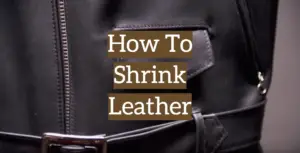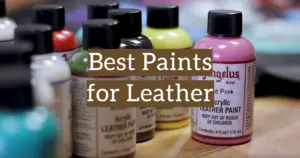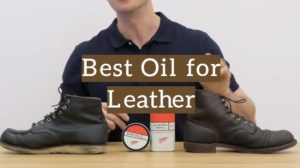
Definition
A rare type of leather is camel hide. It is mostly used for bag production. It’s quite close to the buffalo and nubuck leather types.
Camel leather might seem like an odd, unusual choice of material, based on where you’re from. However, there are a couple of explanations why this fine leather, be it a camel hide purse, shoes, or belt, should be considered for your next buy.
Camel hides are primarily hand buffed and rolled with an aniline drum, which preserves its coloring and renders them distinctive with irregular shades. Veg tanned camel hides preserve natural markings and shades of color that offer them the special look they have.
Being common to cowhides, but camel hide tends to be much thinner because camels have longer legs and a very short body especially in comparison to cows.
Advances in modern tanning techniques mean you can find almost every imaginable camel leather color that can be associated with leather in general, including silver and gold shades.
The main property of a camel’s hide is that the frequency of its skin fibers per square centimeter is 10 times higher than a cow has. Such skin protects the animal from the extreme conditions where it traditionally lives. This makes the leather surprisingly tough and very durable. Nevertheless, its strength, fortunately, comes not at the expense of beauty – the camel’s hide is elastic and soft. Also, it has a unique recognizable pattern.
Key properties of natural leather made from camel hides
- Extremely strong and durable;
- Very tear-resistant;
- Scuff-proof;
- Attractive grain pattern;
- Many colors are available;
Camel leather vs calfskin (cowhide)
Camel hides are not quite popular, and they’re much tougher than standard cowhides. Compared to cowhides, they contain almost 10 times the volume of fiber. Consider such factors when choosing between natural camel leather or cowhide material:
- Thickness. On average, camel hides are about 2-3 mm, while an average calfskin hide is from 0.8 mm to 1.6 mm;
- Size. Calfskin hides are between 6 -16 square feet, while camel hides are naturally wider (between 50 – 55 square feet);
- Softness. In addition, the camel leather is softer and smoother than a cowhide material;
- Grading and selection. Owing to the desert temperature, which is very harsh, the supply of good selection in camel hides is reasonably poor, so the most frequent post-slaughter faults were grain cracks (14.9 percent), hide beetle damage (8 percent), heat or putrefaction damage (3.7 percent) and machine-induced defects (0.5 percent). Whereas 5-15% of calfskin leather has an impressive range;
- Cost. Camel leather is more affordable than buffalo or cowhide since the countries of origin did not have the facilities for tanning and large-scale manufacturing of finished goods, much of the camel hides are shipped for further processing to other countries. The costs of calf leather are a bit higher than any camel leather hides;
Benefits of camel leather
- Sturdy;
- Lightweight;
- Very sustainable;
- Nice texture;
As for the drawbacks of camel leather, limited supply, strong odor and high prices are few cons to consider.
Its durability is one of the main pros of camel leather. The hardness of the hide of an animal is primarily dictated by the climate in which they reside, and in some of the harshest conditions in the world, camels live. So it’s not that shocking that camel hide is thick, and to make a durable commodity you should use less of it. It’s popular to find that camel leather, not unlike calfskin, is tough and lightweight.
Uses
In Abu Dhabi, Al Khaznah Tannery is aiming to create a change with the industrial farming of camel hides in the market. They create a lot of camel leather products sold all over the world.
Camel skin is quite versatile in terms of the finished products that can be made from it. Leather jackets, bags, wallets, shoes, cases for iPhone and other mobile gadgets, car upholstery – natural camel leather can be used in the manufacture of all this.
Furniture production is perhaps the only area where the use of camel leather is the least common due to its natural properties.
Camel leather is less likely to deteriorate quickly than traditional leather. Thus, the durability of the camel leather bag will also be greater than any cowhide bag.
Obviously, camel leather has properties that make it ideal for many uses. And although some examples of models are already beginning to appear at Gucci, Prada and Chanel, nevertheless, it still remains outside the attention of most fashion houses.
Typically, looking for camel leather takes you to some pretty fascinating brands. KAMEL by Paul, for instance, from Washington DC, deals entirely with camel leather.
How to recognize authentic camel leather?
The camels can be up to 40 years old until they are killed, as camels are typically found in desert cultures and used for transport, nutrition, and clothes. That is why natural camel leather has distinctive wear lines and wounds, like other skins of older species, if kept in its natural condition.
Some full-grain camel hides have a pebble-like texture. You may have a fast sleep on a rugged camel. Camel leather is often considered to provide a stunning and special patina from UV exposure with a nice “honey” shade.
The scent is one common criticism regarding camel leather. There is no lack of Reddit feedback complaining about the scent of genuine camel leather. If this comes from conventional tanning methods or the essence of the hides, there are claims that it is often tanned with feces. Bear in mind that the probability is here that the scent is a by-product of conventional techniques of tanning rather than anything inherent about the hide itself.
Care and maintenance
Combine warm water and dish soap to rinse the camel leather, dip a fluffy rag in it, wring it out and wash the outside surfaces of the purse. To wash the soap off, use a second wet, moist rag. With a towel, rinse. Water stains and scuffs can also be removed by wet, soapy water.
Even if you’re cautious, stains may occur to your camel purse. Grab one of these things to delete them, and get going:
1) Alcohol or nail polish remover
It is an ideal way to get rid of streaks and scuffs of ink. Dip a cotton swab into a rubbing alcohol or nail polish remover and gently blot the stain. Don’t rub it, otherwise, you could scatter the dye. Blot softly before the stain fades. Use a clean, moist cloth to scrub and a towel to remove the residue.
2) Cornstarch and baking soda
Spray cornstarch and baking soda on the spot to clean the oil or grease stains. For a wet rag, softly massage it in. Let them sit down for a couple of hours or overnight. The oil would be consumed by soda or starch. With a soft towel, rinse the powder residue.
3) Cream of tartar and lemon juice
Combine equivalent sections of both of them into a paste. Apply and let sit for 30 minutes on the stained field. To clear the paste, use a wet rag. There is a slight bleaching impact on lemon juice and tartar cream, so please use this on the light-colored leather only.
Using a natural leather conditioner after you have made your purse clean, to prevent it from cracking and drying, and to make it immune to potential stains. By blending 1 part of vinegar into 2 parts of linseed oil, you can purchase a commercial leather conditioner or produce a DIY product of the same quality level. Apply to any camel leather product, let sit for roughly 15 minutes and incorporate a smooth cloth before the leather shines. Understanding how to clean a leather purse would make the purse look amazing and last a long time.
Final thoughts
The largest market for camel leather is the world of fashion, clothing designers and leather craftsmen who regularly seek new directions for applying their creative inspirations. Also, it is an amazingly versatile material, not only can its palette of colors be infinitely varied. Camel leather can have every imaginable degree of resilience – this softest leather equally makes a great jacket for Hermes and a wonderful sofa for your living room.









